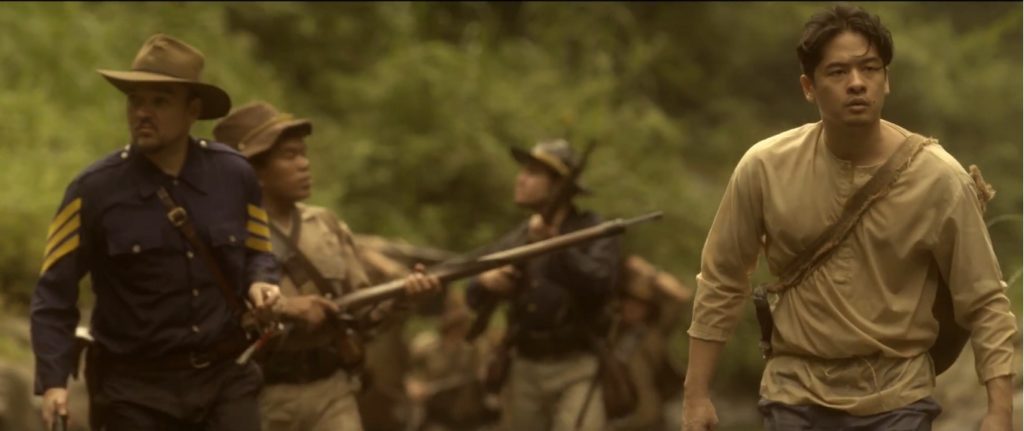By ZYMON ARVINDALE R. DYKEE

IT IS the end of the nineteenth century. In the Philippines, a revolution is brewing. Andres Bonifacio and his fellow Katipuneros are plotting to overthrow the Spaniards. Jose Rizal, in his stay in Berlin, is polishing his first novel. War is waged against the colonizers, with the goal of gaining freedom engraved in the minds of the Filipinos. And so, everyone is frustrated—Rizal decides to take his life for he cannot write his novel’s last words, and Bonifacio decides to poison the enemies with arsenic-mixed water.
This is the premise of the 13th Cinema One Originals’ jury prize entry Historiographika Errata: history may be reconstructed in a comical way. Director Richard Somes switches from the plain and downright narration of the Filipino dream of personal and national freedom to an awkward and absurdist chronicle.
Three humorous episodes are concerned with the three periods of foreign invasion, with one episode weaved oddly with magic. The first episode, set in 1896, features a suicidal Rizal (Joem Bascon) and a paranoid Bonifacio (Jett Pangan). The national hero writes Mi Ultimo Adios as his suicide note, while the Katipunan leader and his comrades meet while disguised as women. Years after the turn of the millennium, the second episode takes place. It shows ex-Katipunero Mateo (Alex Medina) leaving his family to join the Americans in invading the Moros. Finally, Librada (Nathalie Hart), an American’s bastard, lies with two men in exchange for food, which she gives to her husband Ernesto (Paolo Paraiso) who is imprisoned in a garrison by the Japanese.
In this altered universe by Somes, all characters feel frantic. That franticness, in return, is the source of the audience’s laughter. When Rizal is near to blast his brain with a gun, an American woman by the name of “Leonor Rivera” enters his room to tell him the message of Maximo Viola. In the middle of the midnight meeting, Bonifacio and his troops are disturbed by a woman selling turon and the smell of burning rice. Librada, on the brink of dying, is saved by a deus ex machina in the form of an American soldier.
The film also combines humor with fantasy. Mateo, in his escape from the battle between the Americans and the natives, trespasses a forest guarded by a goddess. Here he meets in his demise a crawling creature who informs him that he may be cured by blood sacrifice. In this scene, magic realism is used to convey that humans tend to rely on the fantastic to explain the source of and solution to their problems.
As it progresses, the film strikingly changes color. In Librada’s story, the daylight scenes are tinted with sepia. Perhaps it is reminding the viewers that their ruminations are circling around something archaic, or it may also be evoking sentimentality.
Yet this is the whole point of the absurdism-subscribing Historiographika Errata: to ponder on the sorrows of the past after indulging in the whimsical reimagination of the country’s conflicted tale. While the film explores the unusual possibilities that could have happened, the viewers are reminded of the remarkable sacrifices to achieve order. The film, in its entirety, serves as a pitcher which content brims with humanity. F



